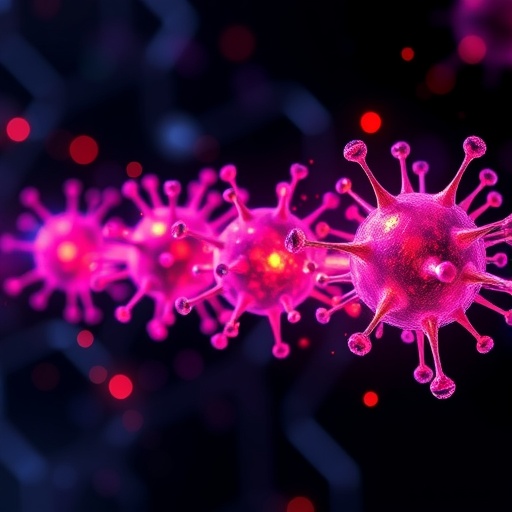A newly published study offers groundbreaking insights into human activity recognition (HAR) by introducing a two-phase hybrid clustering framework that seeks to delineate transitional activities inherent in various dynamic movements. This innovative approach is pivotal for enhancing the accuracy and efficiency of HAR systems, opening new avenues in the realm of smart technologies, wearable devices, and health-monitoring systems. Focusing not just on static activities but also on the transitions between them, the framework promises to provide more nuanced data interpretation in real-world scenarios.
Researchers M. Woo, A.A. Harby, and F. Zulkernine have made significant strides in improving HAR methodologies by integrating a two-phase clustering process. The hybrid framework intricately combines both hierarchical and k-means clustering techniques to handle the complexities of transitional activities. Traditional clustering methods often struggle with the subtleties of these transitional phases, which are crucial for accurate activity recognition. By merging these two strategies, the researchers have optimized the identification and categorization process, leading to more reliable outputs in HAR systems.
The first phase of the framework employs hierarchical clustering to effectively group similar transitional activities based on their characteristics. This method allows for a granular analysis of data, enabling researchers to visualize activity transitions in a more structured manner. The hierarchical approach also allows for the creation of a dendrogram, which maps the relationships between different activity states, showcasing how individuals transition from one activity to another. Each connection and relationship elucidated in this phase provides critical insights for understanding human movement patterns.
Following the hierarchical phase, the second phase utilizes k-means clustering to refine groups formed in the first phase. This step is pivotal, as it aids in segmenting the data into more definitive clusters based on user-specific or situational contexts. K-means clustering enhances the precision of activity recognition by focusing on centroids, thereby minimizing within-group variability while maximizing distances between groups. This allows for seamless classification of activities, even amidst varying user behaviors and environmental factors.
The researchers emphasized that the hybrid framework was particularly effective in analyzing everyday movements such as sitting down, standing up, and transitioning between different postures. This is particularly relevant in contexts such as elderly care, rehabilitation, and physical therapy. By capturing these transitional activities more accurately, the developed framework addresses a critical gap in existing HAR models which often overlook the significance of transitional movements in their analytical processes.
Moreover, the data acquisition process enhances the validity of the framework’s development. The study utilized diverse datasets from a range of environments, including home settings, workplaces, and healthcare facilities, ensuring that the results are generalizable and applicable to various real-world scenarios. This extensive data sampling is instrumental in positioning the two-phase hybrid clustering framework as a robust model for future research in HAR.
Technologically speaking, the study employed advanced machine learning algorithms to analyze the data, reinforcing the efficacy of the two-phase approach. The algorithms were meticulously fine-tuned to ensure they could handle the nuances of transitional activities, resulting in significantly improved recognition rates compared to traditional methods. This technological advancement is expected to contribute to a wide spectrum of applications ranging from personal fitness monitoring apps to smart home technologies that rely on accurate motion detection.
In the context of health monitoring, the implications of these findings are monumental. The ability to accurately track transitional activities can lead to improved assessments of an individual’s functional mobility. Healthcare professionals can utilize this data to craft personalized rehabilitation programs that cater to an individual’s specific needs, ultimately enhancing recovery outcomes. Therefore, the study not only contributes to the field of computer science and artificial intelligence but also holds practical implications for enhancing human health and well-being.
Furthermore, the researchers pointed out the potential for integrating the two-phase hybrid clustering approach into existing HAR frameworks. By refining the activity recognition processes, it can significantly advance other fields such as robotics, where understanding human movements is critical for developing intelligent systems that interact with humans in a seamless manner. For instance, robots designed for household chores would benefit immensely from this enhanced activity recognition capability.
As the world continues to move towards greater reliance on smart technologies, the implications of improved human activity recognition systems become ever more pressing. The study offers a glimpse into the future of HAR, where intelligent systems are not merely reactive but can anticipate and adapt to human behaviors in real-time. This advance could lead to an era where machines operate more harmoniously within human environments, enhancing overall quality of life.
In summary, the two-phase hybrid clustering framework explored in this research marks a pivotal step forward in human activity recognition. By effectively capturing and categorizing transitional activities, this approach addresses existing shortcomings in HAR systems and expands the possibilities for applications in health care, smart homes, and beyond. It showcases the remarkable potential of combining innovative machine learning techniques with practical real-life scenarios, illuminating pathways for future research and technological advancements.
In conclusion, as the study published in the journal “Discov Artif Intell” highlights the necessity for precise transitional activity recognition, it opens up a myriad of possibilities for enhancing our understanding of human behavior through technology. The study not only serves as a strong foundation for future exploration of HAR but also emphasizes the importance of applying sophisticated data analysis techniques in a rapidly evolving technological landscape. This collaborative effort between researchers underlines the significant impact that interdisciplinary approaches can have in solving complex problems in modern society.
Subject of Research: Human activity recognition through a two-phase hybrid clustering framework.
Article Title: A two-phase hybrid clustering framework exploring transitional activities in HAR.
Article References:
Woo, M., Harby, A.A., Zulkernine, F. et al. A two-phase hybrid clustering framework exploring transitional activities in HAR.
Discov Artif Intell 5, 233 (2025). https://doi.org/10.1007/s44163-025-00503-6
Image Credits: AI Generated
DOI:
Keywords: Human activity recognition, hybrid clustering, transitional activities, machine learning, health monitoring, smart technologies.




